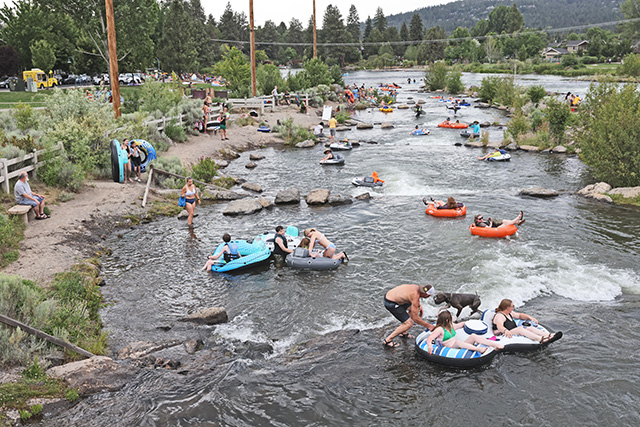Tribes, nonprofit acquire land for fish, wildlife conservation
Published 5:00 am Wednesday, June 12, 2013
STAYTON — The enthusiasm was impossible to miss.
As members of the Western River Conservancy and Confederated Tribes of the Grand Ronde bushwhacked through a former farmstead along the North Santiam River, they used phrases such as “oasis,” “ideal” and “the best fish and wildlife habitat in the Willamette Basin.”
High praise indeed.
The groups are part of a coalition that purchased this property southwest of Stayton for a conservation project that hopes to improve salmon and steelhead runs on the North Santiam River.
The property, which cost $3.5 million, includes two miles of waterfront — one mile of creeks and one along the North Santiam — and 338 total acres of forest, wetlands and old farmland.
“This farmstead has been on our radar for a long time, because we recognized the remarkable conservation value,” said Josh Kling, assistant program director of the Portland nonprofit Western River Conservancy. “What makes it special, and unique, is that half of the property is intact, functioning habitat.
“The riparian forest is largely intact; there’s wetlands and sloughs, and so many features that make it ideal for fish and wildlife.”
The land will eventually be transferred to the Grand Ronde, who will serve as the site’s long-term steward. They’ve renamed the area Chahalpam (“place of the Santiam Kalapuya people”) in honor of having traditional roots in the area.
“Today, we’re trying to reinsert ourselves into some of our traditional lands, so that was a big reason for being involved,” said Siobhan Taylor, public affairs director for the Grand Ronde. “We envision the land as a wild and beautiful place to be preserved and protected.”
The tribe has 18 months to develop a management plan, open to public comment, that will answer questions of habitat stewardship and public access. The property is surrounded by private farmland and not accessible except by reservation.
The tribe manages a number of areas in the western Willamette Valley and Coast Range for conservation.
“What makes us uniquely qualified to manage these lands is the marriage between traditional and modern methods,” said Michael Karnosh, ceded lands program manager for the Grand Ronde. “We have modern resources — fire crews, biologists and scientists — but we also have a traditional knowledge of working with the land.”
Funding for the project came from the Bonneville Power Administration through the Willamette Wildlife Habitat Agreement. The 15-year agreement requires BPA to provide stable funding for habitat acquisitions in the Willamette Basin to offset the effect of federal dams on the Willamette River and its tributaries.
Western River has spotlighted the property since 2009 because of its potential to improve fish runs on the North Santiam, historically one of the most productive streams in the Willamette Basin.
“The North Santiam has a lot of characteristics that fish like, including cold water and the right kind of gravel,” Oregon Department of Fish and Wildlife biologist Laura Tesler said. “This particular property is very biologically important. It has lots of nice side channels and places for spawning. There’s a relatively intact flood plain forest that’s important for nutrient exchange good for fish and wildlife.”
Along with improving fisheries, the surrounding forest attracts a collection of wildlife, including pileated woodpeckers, western pond turtles, red-legged frogs, elk and deer.
“There’s such a mosaic of habitats here; it accommodates so much wildlife,” Tesler said. “Getting this property took a lot of time and effort, but it was worth it. This is one of the highest-quality properties we’ve ever acquired.”







